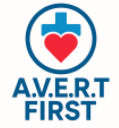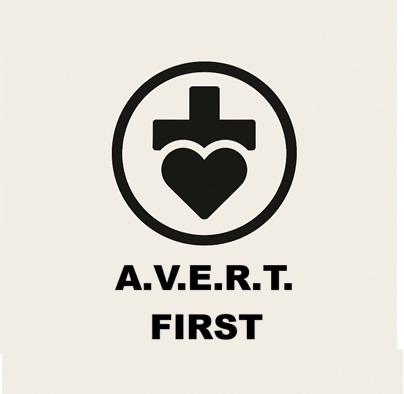Public Health & Systems Leadership in the Context of A.V.E.R.T. Harm
Introduction
Public Health & Systems Leadership focuses on population-level strategies to prevent harm, reduce risks, and promote equitable health outcomes. Leaders in this domain oversee policy development, resource allocation, and systemic interventions that influence communities and organizations.
A.V.E.R.T. Harm provides a structured framework to integrate emerging risk assessment, harm identification, and proactive response into public health practice. By using the A.V.E.R.T. approach, leaders can anticipate trends, address systemic vulnerabilities, and coordinate multidisciplinary responses to health and social threats.
1. Core Functions of Public Health & Systems Leadership
a. Policy and Program Development
-
Design, implement, and evaluate policies to reduce harm and promote health equity.
-
Develop programs targeting high-risk populations and emerging public health threats.
-
A.V.E.R.T. Harm Role: Uses data-driven risk assessment to identify emerging trends, inform policies, and prioritize interventions before harms become widespread.
b. Surveillance and Risk Monitoring
-
Monitor population health indicators and environmental, social, and behavioral risk factors.
-
Detect emerging trends, outbreaks, or systemic failures.
-
A.V.E.R.T. Harm Role: Integrates surveillance with structured assessment tools (H.A.R.M.O.N.Y., S.C.A.N.) to identify early warning signs at both individual and community levels.
c. Systems Coordination
-
Ensure collaboration across clinical, social, and community-based services.
-
Streamline referral pathways and inter-agency communication.
-
A.V.E.R.T. Harm Role: Provides standardized frameworks (A.B.C.D.E.™) to coordinate responses across systems and sectors, reducing gaps and overlaps in care.
d. Leadership and Advocacy
-
Guide organizations and communities in adopting best practices for harm prevention.
-
Advocate for resource allocation, policy reform, and community empowerment.
-
A.V.E.R.T. Harm Role: Embeds leadership principles in training, enabling leaders to champion harm reduction initiatives and systemic change.
2. Key Responsibilities
-
Strategic Planning: Develop long-term strategies that integrate emerging risk detection, prevention, and mitigation across populations.
-
Resource Management: Allocate funding, personnel, and infrastructure efficiently to address both immediate and systemic risks.
-
Quality Improvement: Monitor outcomes, evaluate programs, and implement continuous improvement processes.
-
Crisis and Emergency Response: Lead system-wide responses during public health emergencies, including outbreaks, natural disasters, or sudden social crises.
-
Community Engagement: Facilitate community participation in identifying risks and co-developing solutions.
3. Integration with A.V.E.R.T. Harm
-
Proactive Risk Identification: Leaders use A.V.E.R.T. frameworks to detect emerging hazards in healthcare, social systems, or environmental contexts.
-
Systemic Harm Reduction: Identifies hidden, repeated, or minimized harms at the population level and implements interventions before they escalate.
-
Data-Driven Decision Making: Uses surveillance data, assessment tools, and predictive modeling to prioritize interventions and allocate resources effectively.
-
Cross-Sector Coordination: Ensures clinical, social, and community services work together for holistic harm prevention and management.
4. Skills and Competencies
Public Health & Systems Leaders integrating A.V.E.R.T. Harm should demonstrate:
-
Strong analytical and systems-thinking skills.
-
Expertise in risk assessment and harm identification.
-
Leadership in multi-agency coordination and policy advocacy.
-
Ability to communicate complex risk information clearly to stakeholders.
-
Commitment to equity, inclusivity, and ethical decision-making.
5. Challenges
-
Fragmented systems and poor communication between agencies.
-
Limited resources to address emerging risks proactively.
-
Political, social, or economic barriers to implementing systemic interventions.
-
Rapidly evolving risks that outpace current policies or practices.
A.V.E.R.T. Harm addresses these challenges by providing structured, actionable frameworks that guide leaders in identifying, prioritizing, and responding to emerging and systemic harms.
6. Best Practices
-
Apply preventive, data-driven approaches to policy and program development.
-
Integrate cross-sector collaboration to ensure cohesive harm reduction strategies.
-
Embed continuous monitoring and evaluation to adapt interventions in real time.
-
Promote community engagement and transparency to build trust and resilience.
-
Use structured escalation frameworks (A.B.C.D.E.™, H.A.R.M.O.N.Y., S.C.A.N.) for consistent and timely responses.
7. Conclusion
Public Health & Systems Leadership plays a critical role in shaping environments that prevent harm and promote well-being. When guided by A.V.E.R.T. Harm principles, leaders can anticipate emerging risks, coordinate integrated responses, and implement policies and programs that reduce both immediate and systemic harms. This ensures healthier, safer, and more resilient communities.






